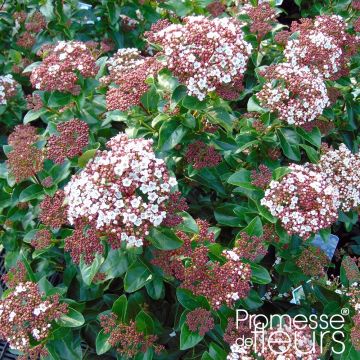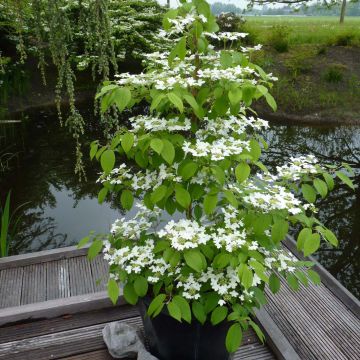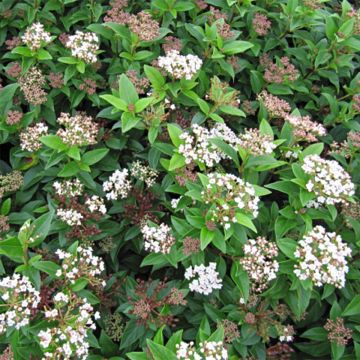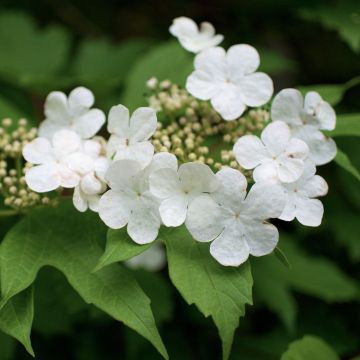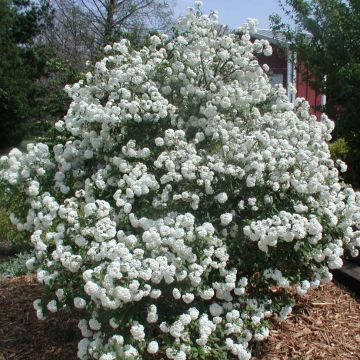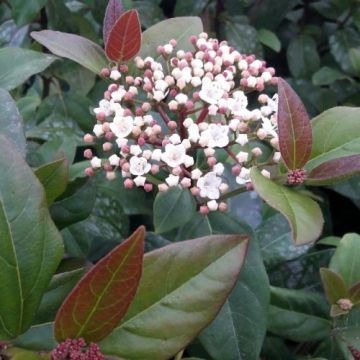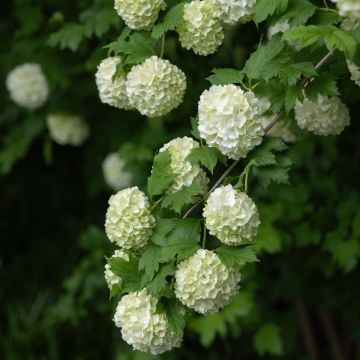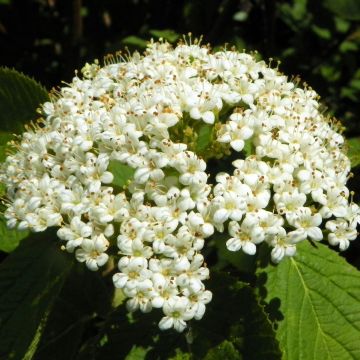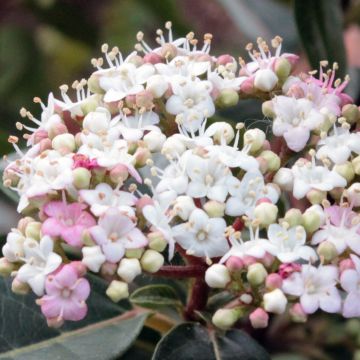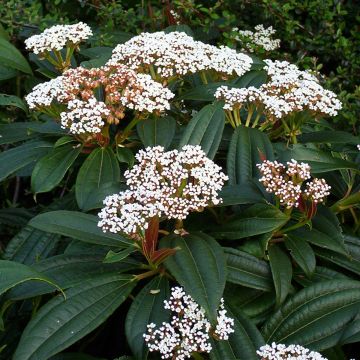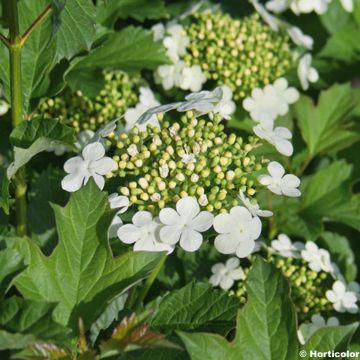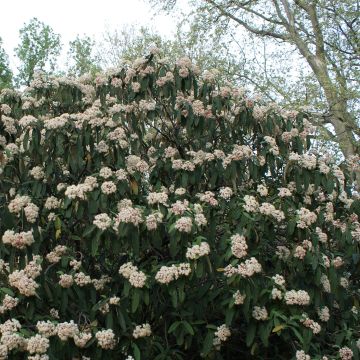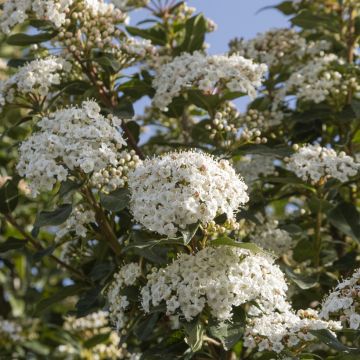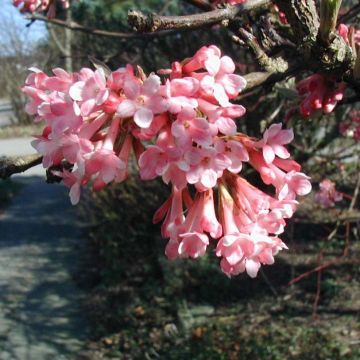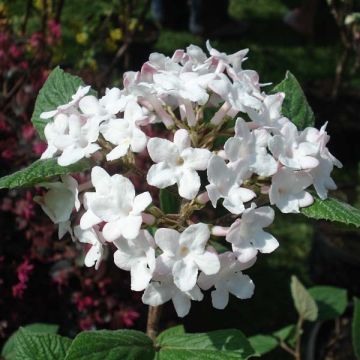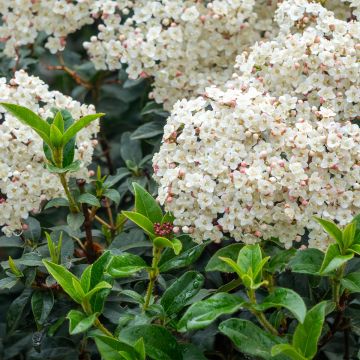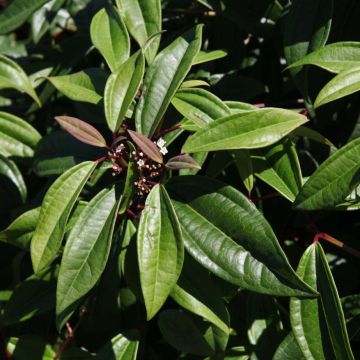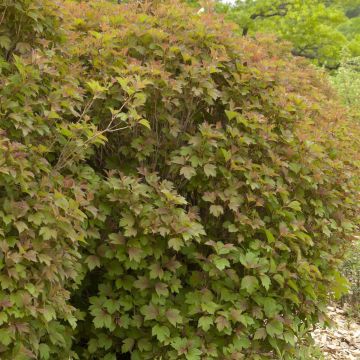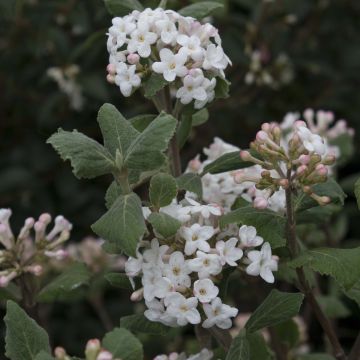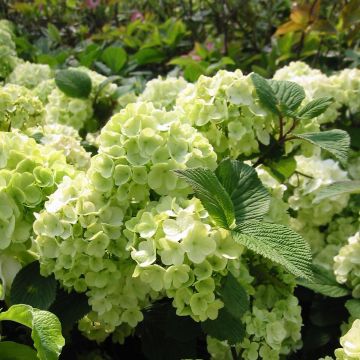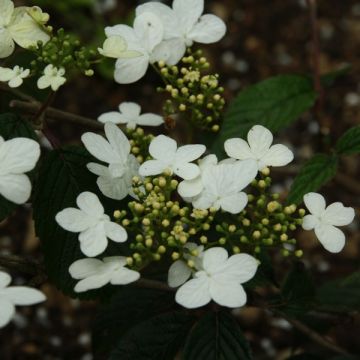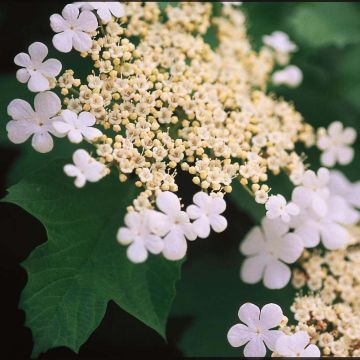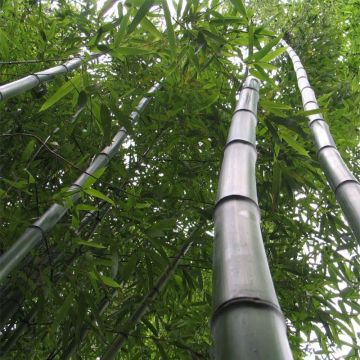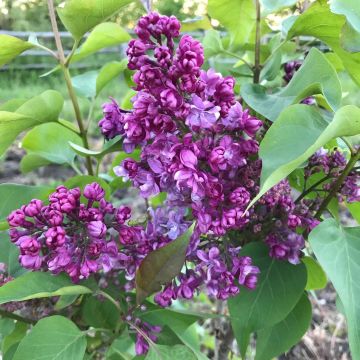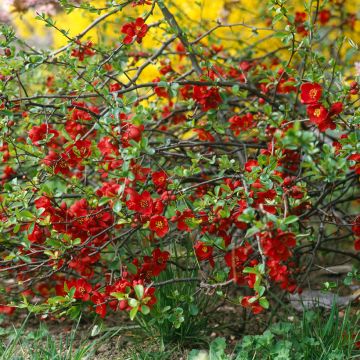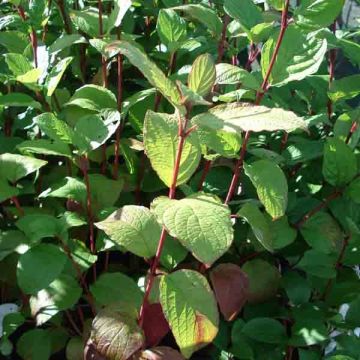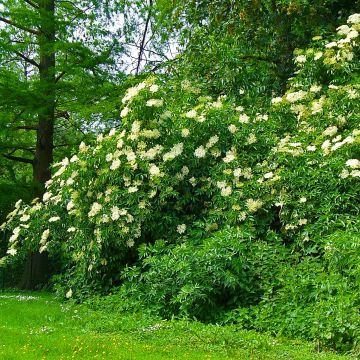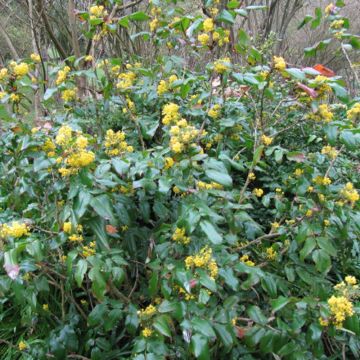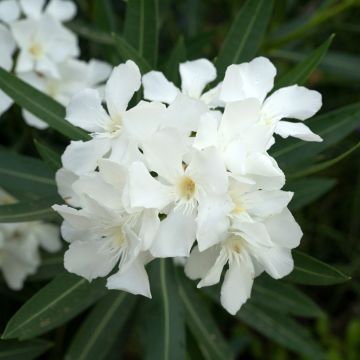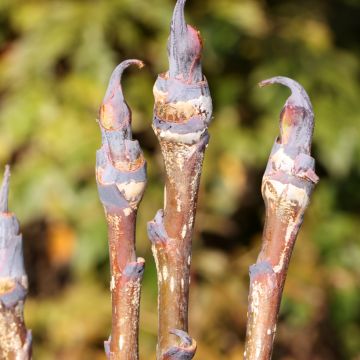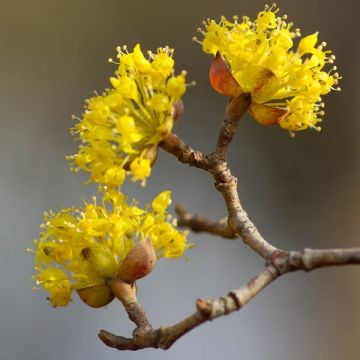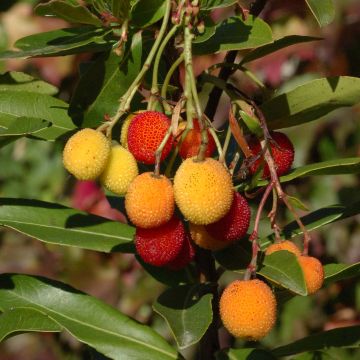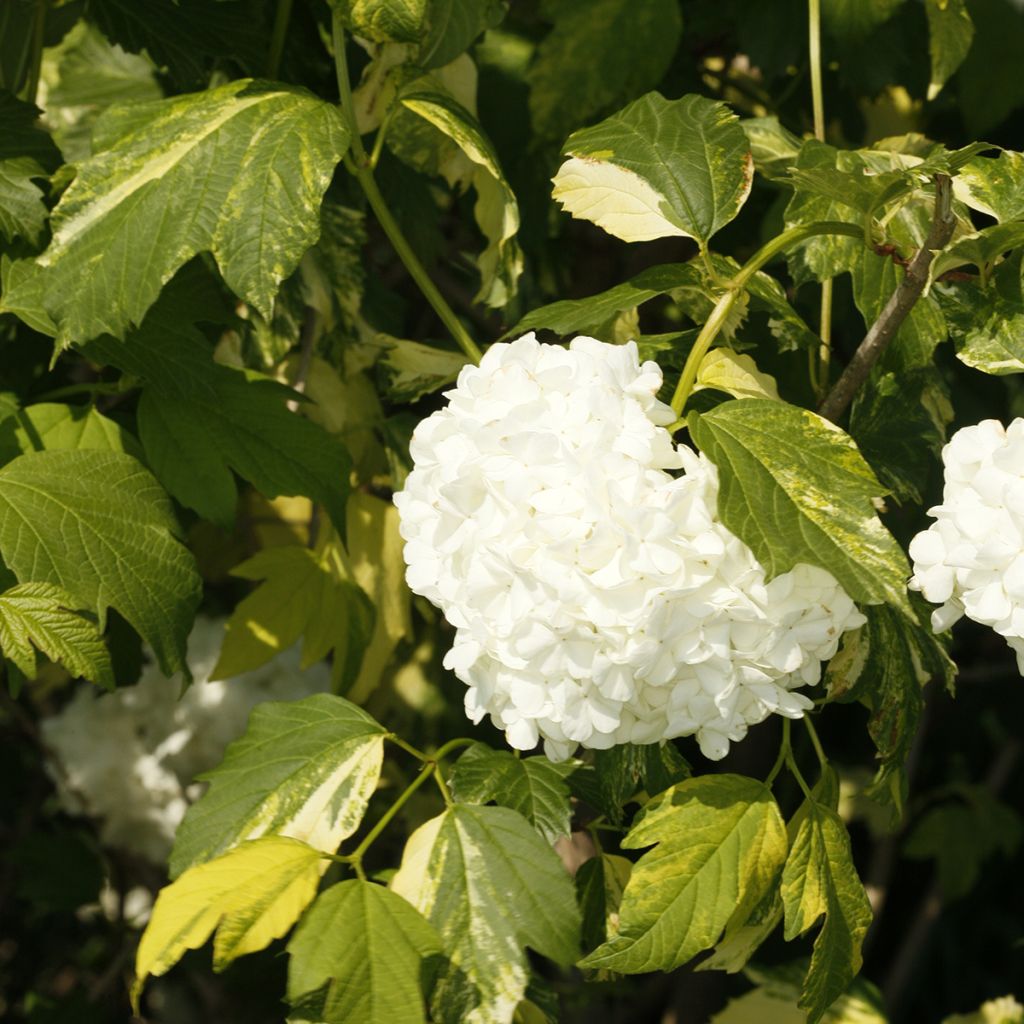

Viburnum opulus Pechcin - Guelder Rose
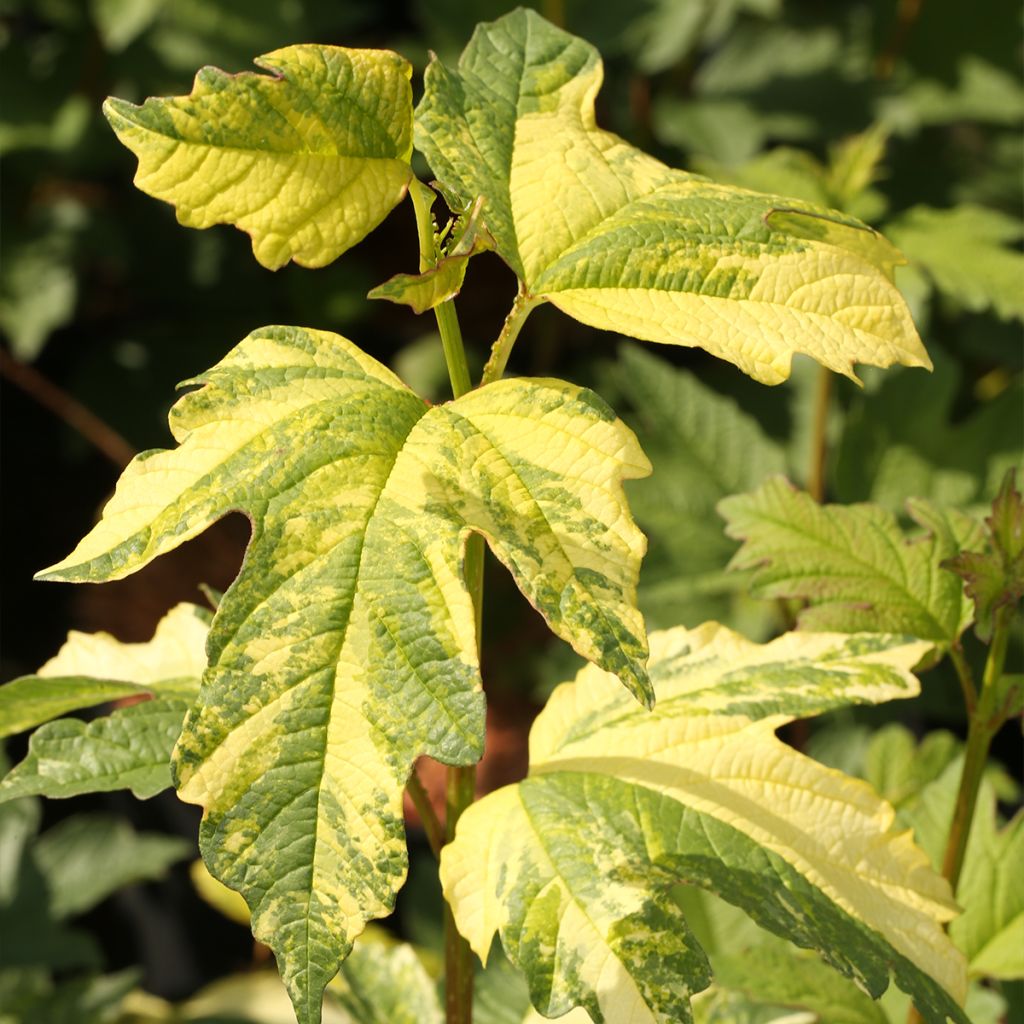

Viburnum opulus Pechcin - Guelder Rose
Viburnum opulus Pechcin - Guelder Rose
Viburnum opulus Pechcin
Guelder Rose, Snowball Tree, European Cranberrybush
Why not try an alternative variety in stock?
View all →This plant carries a 24 months recovery warranty
More information
We guarantee the quality of our plants for a full growing cycle, and will replace at our expense any plant that fails to recover under normal climatic and planting conditions.
From €5.90 for pickup delivery and €6.90 for home delivery
Express home delivery from €8.90.
Does this plant fit my garden?
Set up your Plantfit profile →
Description
Viburnum opulus Pechcin is a particularly ornamental Guelder Rose due to its unique foliage. This variety is covered with beautiful cut leaves, a beautiful green with yellow variegation. In spring, a slightly greenish white flowering brightens up the foliage. In autumn, decorative red berries appear. With a medium growth, this deciduous bush has an irregular habit and reaches a height of 2m within 10 years. It is extremely hardy and grows in full sun or partial shade, in fertile, moist soil.
The Guelder Rose, sometimes called Snowball Tree, European Cranberrybush, or European Highbush Cranberry depending on the region, is a deciduous shrub native to Europe and North Africa. It now belongs to the Adoxaceae family, like Elderberry. Viburnum opulus comes in a few varieties, including the classic 'Roseum' Snowball Tree (Viburnum opulus 'Roseum'), which is now somewhat outdated. Pęchcin is a Polish selection that updates the genus, with its beautiful deciduous foliage. Easily identifiable with their characteristic shape, the leaves are divided into three main lobes, a larger central lobe and two smaller lateral lobes. The leaf is carried by a fairly long and flexible petiole, and its margin is irregularly toothed. Arranged in an opposite position, the leaves are remarkable for their colouring, a vivid green variegated with yellow in an irregular pattern. In some leaves, the yellow is subtle, while in others, it covers half or even the entire surface. This random variegation gives this variety its character, and the proportion of yellow intensifies as the season progresses.
This Guelder Rose blooms in May-June, like other cultivars, in the form of flattened corymbs measuring 6 to 8 cm in diameter; these corymbs are composed, as in hydrangeas, of a crown of sterile florets surrounding a central disk of fertile florets. This white, slightly greenish flowering is highly nectar-rich. The subsequent fruiting is decorative, in the form of hanging clusters filled with round, bright red berries measuring 1 cm in diameter, slightly translucent when ripe and loved by birds.
Growing a bit slower than the species with entirely green foliage, this shrub reaches a height of about 2m and a width of 1.50 to 1.80m after 10 years of planting. It will continue to grow up to approximately 3.50m.
Easy to grow in any ordinary soil, even limestone and clay, it appreciates rich soil and moisture. It thrives in full sun but also tolerates partial shade, especially in hot climates, which helps maintain a certain level of atmospheric humidity, as it is not a shrub for dry conditions. It is extremely hardy, can withstand temperatures as low as -30°C without any risk, and tolerates pruning well, allowing its size to be adjusted to the available space in a small garden.
Viburnum opulus Pęchcin is a novelty that will delight enthusiasts of variegated foliage, in a genus that has so far been rather traditional... You can associate it with other decorative foliage in a diverse flowerbed. A purple foliage like that of Physocarpus opulifolius Black Light will create a powerful colour contrast. The leaves of this small shrub, which are also trilobed, resemble those of the Viburnum, but its white flowering clearly identifies it as a Rosaceae. The same effect can be achieved by planting a Elderberry such as Sambucus nigra Black Lace next to it, this time from the same family but with a completely different foliage, extremely cut and very architectural. Beautiful combinations can also be found with Oakleaf Hydrangeas (Hydrangea quercifolia) with large cut leaves that often turn red in autumn, and their abundant summer flowering. The Winged Euonymus, Euonymus alatus, will also be a good companion with its very natural appearance and flamboyant autumn colours.
Report an error about the product description
Plant habit
Flowering
Foliage
Botanical data
Viburnum
opulus
Pechcin
Caprifoliaceae
Guelder Rose, Snowball Tree, European Cranberrybush
Pęchcin
Western Europe
Other Viburnum
Planting and care
Viburnum opulus Pęchcin prefers to be grown in full sun, but it also tolerates partial shade. Plant it from November to April, outside of the frost period, preferably in rich, moist to wet and well-drained soil. Dig a planting hole of 50 cm in all directions and mix planting compost with the existing soil. Soak the root ball of the bush in a bucket of water for fifteen minutes to ensure it is well saturated. Place it in the planting hole, backfill around it and water thoroughly. This easy-to-grow bush requires little maintenance. The guelder rose is often attacked by aphids, but this is not a major concern. After flowering, you can prune the bush if you want to maintain its rounded shape. Prune lightly and remove any branches that compromise the plant's symmetry. This Viburnum can tolerate severe pruning if necessary.
Planting period
Intended location
Care
This item has not been reviewed yet - be the first to leave a review about it.
Hedge shrubs
Haven't found what you were looking for?
Hardiness is the lowest winter temperature a plant can endure without suffering serious damage or even dying. However, hardiness is affected by location (a sheltered area, such as a patio), protection (winter cover) and soil type (hardiness is improved by well-drained soil).

Photo Sharing Terms & Conditions
In order to encourage gardeners to interact and share their experiences, Promesse de fleurs offers various media enabling content to be uploaded onto its Site - in particular via the ‘Photo sharing’ module.
The User agrees to refrain from:
- Posting any content that is illegal, prejudicial, insulting, racist, inciteful to hatred, revisionist, contrary to public decency, that infringes on privacy or on the privacy rights of third parties, in particular the publicity rights of persons and goods, intellectual property rights, or the right to privacy.
- Submitting content on behalf of a third party;
- Impersonate the identity of a third party and/or publish any personal information about a third party;
In general, the User undertakes to refrain from any unethical behaviour.
All Content (in particular text, comments, files, images, photos, videos, creative works, etc.), which may be subject to property or intellectual property rights, image or other private rights, shall remain the property of the User, subject to the limited rights granted by the terms of the licence granted by Promesse de fleurs as stated below. Users are at liberty to publish or not to publish such Content on the Site, notably via the ‘Photo Sharing’ facility, and accept that this Content shall be made public and freely accessible, notably on the Internet.
Users further acknowledge, undertake to have ,and guarantee that they hold all necessary rights and permissions to publish such material on the Site, in particular with regard to the legislation in force pertaining to any privacy, property, intellectual property, image, or contractual rights, or rights of any other nature. By publishing such Content on the Site, Users acknowledge accepting full liability as publishers of the Content within the meaning of the law, and grant Promesse de fleurs, free of charge, an inclusive, worldwide licence for the said Content for the entire duration of its publication, including all reproduction, representation, up/downloading, displaying, performing, transmission, and storage rights.
Users also grant permission for their name to be linked to the Content and accept that this link may not always be made available.
By engaging in posting material, Users consent to their Content becoming automatically accessible on the Internet, in particular on other sites and/or blogs and/or web pages of the Promesse de fleurs site, including in particular social pages and the Promesse de fleurs catalogue.
Users may secure the removal of entrusted content free of charge by issuing a simple request via our contact form.
The flowering period indicated on our website applies to countries and regions located in USDA zone 8 (France, the United Kingdom, Ireland, the Netherlands, etc.)
It will vary according to where you live:
- In zones 9 to 10 (Italy, Spain, Greece, etc.), flowering will occur about 2 to 4 weeks earlier.
- In zones 6 to 7 (Germany, Poland, Slovenia, and lower mountainous regions), flowering will be delayed by 2 to 3 weeks.
- In zone 5 (Central Europe, Scandinavia), blooming will be delayed by 3 to 5 weeks.
In temperate climates, pruning of spring-flowering shrubs (forsythia, spireas, etc.) should be done just after flowering.
Pruning of summer-flowering shrubs (Indian Lilac, Perovskia, etc.) can be done in winter or spring.
In cold regions as well as with frost-sensitive plants, avoid pruning too early when severe frosts may still occur.
The planting period indicated on our website applies to countries and regions located in USDA zone 8 (France, United Kingdom, Ireland, Netherlands).
It will vary according to where you live:
- In Mediterranean zones (Marseille, Madrid, Milan, etc.), autumn and winter are the best planting periods.
- In continental zones (Strasbourg, Munich, Vienna, etc.), delay planting by 2 to 3 weeks in spring and bring it forward by 2 to 4 weeks in autumn.
- In mountainous regions (the Alps, Pyrenees, Carpathians, etc.), it is best to plant in late spring (May-June) or late summer (August-September).
The harvesting period indicated on our website applies to countries and regions in USDA zone 8 (France, England, Ireland, the Netherlands).
In colder areas (Scandinavia, Poland, Austria...) fruit and vegetable harvests are likely to be delayed by 3-4 weeks.
In warmer areas (Italy, Spain, Greece, etc.), harvesting will probably take place earlier, depending on weather conditions.
The sowing periods indicated on our website apply to countries and regions within USDA Zone 8 (France, UK, Ireland, Netherlands).
In colder areas (Scandinavia, Poland, Austria...), delay any outdoor sowing by 3-4 weeks, or sow under glass.
In warmer climes (Italy, Spain, Greece, etc.), bring outdoor sowing forward by a few weeks.

































